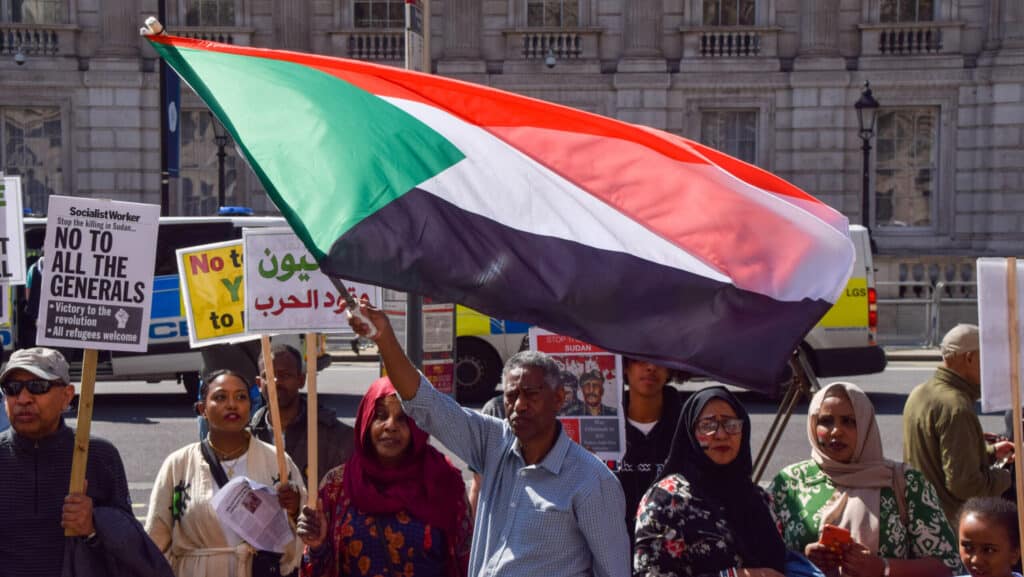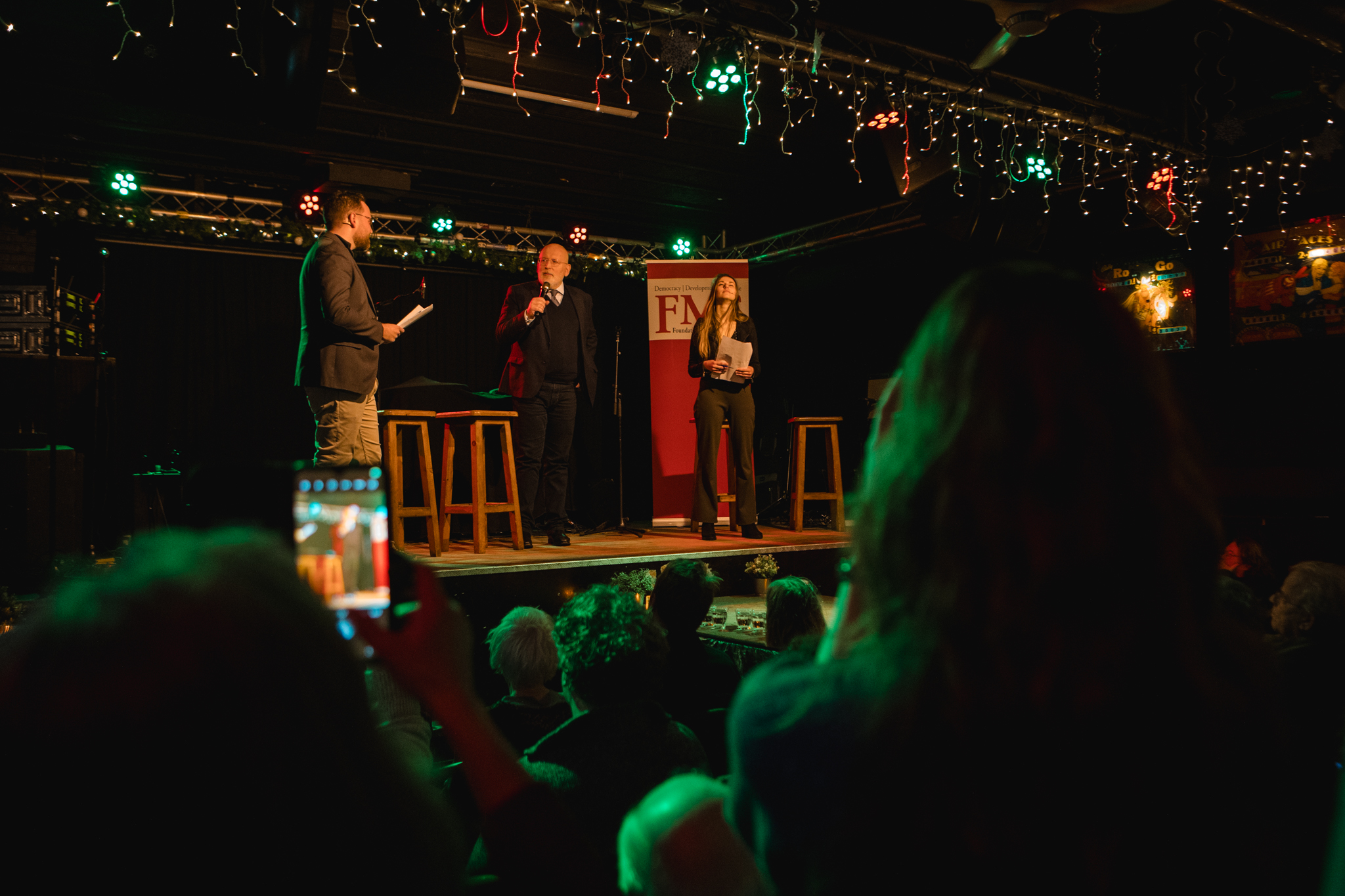In Khartoum, the capital of Sudan, in April last year, a fierce battle out between the government army the Sudanese Armed Forces (SAF) and the paramilitary army Rapid Support Forces (RSF). A bloody war has been raging in Sudan ever since. But even before this escalation in 2023, the country was experiencing major problems. Sudan's population has been struggling with poverty, hunger and violence for more than 30 years. Of the country's more than 48 million inhabitants, 8.2 million have now fled.

Despite the serious consequences of the conflict, Sudan receives little international attention. That is why on 26 June, we organised a political café on the situation in Sudan. The high turnout, despite the heat of the day, underlines the urgency and commitment to this issue. During the meeting, we discussed several themes that together paint a picture of the complex and tragic situation in the country. Among others, we highlighted the humanitarian crisis, historical backgrounds, press freedom, the disproportionate impact on women, and future prospects for Sudan.

The humanitarian disaster
The now 8.2 million people who have fled are mainly from Khartoum and the Darfur region. The vast majority, about 6.5 million people, now reside in other parts of Sudan, while a smaller proportion have fled to neighbouring countries.
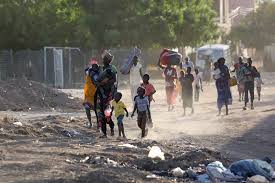
Nearly 18 million people - about the same as the population of the Netherlands - in Sudan have no certainty about their next meal. And for at least 6 million of them, the situation is so dire that they are teetering on the brink of acute famine. The UN World Food Programme warns that the world's worst famine is imminent, with more than 20 million Sudanese at risk of dying from malnutrition.
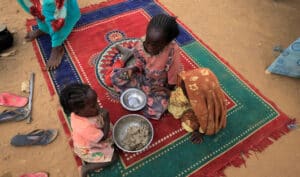
Human Rights Watch even speaks of possible ethnic cleansing in the western part of the country. They claim that RSF and allied militias committed serious violations that targeted Against the Massalit people and other non-Arab communities with the apparent aim of at least getting them to leave the region for good. The tension between Arab and non-Arab communities has deep historical roots.
History of conflict
After the independence of Sudan in 1955 the first constitution stipulated that the country would be organised 'after the Arab language and culture'. This caused segregation between the 'Arab' and 'African' populations. Disadvantaged groups, such as ethnic African Sudanese, have since tried to force equality by force. The breakaway of predominantly ethnic African South Sudan in 2011 and the genocide in Darfur in 2003 are tragic examples of this.

For a long time Sudan was led by dictator Omar al-Bashir, who took charge after an army coup against the democratically elected government in 1989. Al-Bashir responded to opposition with harsh repression. This harsh repression earned him two arrest warrants from the International Criminal Court for genocide, war crimes and crimes against humanity. After more than 30 years of dictatorship, the revolution broke out in 2019 and the SAF and RSF deposed al-Bashir. However, what began as a joint effort to end the dictatorship later turned into a power struggle between the SAF and the RSF. This led to the escalation of violence in April 2023.
Press freedom: the first casualty of conflict
Despite the immense humanitarian crisis, international attention remains limited. This is partly caused by the complexity of the conflict and the difficulty of understanding it from a simple good-versus-bad perspective. Moreover, the insecure situation makes it almost impossible for journalists to report on the ground.
Press freedom has come under severe pressure in Sudan. The Sudanese Journalists Syndicate (SJS) has in one year 377 attacks on press freedom documented. Hundreds of journalists have fled the country, many of them to neighbouring countries such as Egypt and Uganda. The media is under constant threat, with countless newspapers, radio stations and TV stations shut down or destroyed.
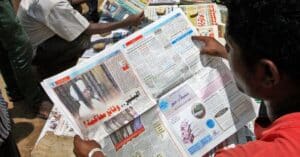
Journalists trying to report on atrocities in Sudan risk their lives. Both SAF and RSF present themselves as the protectors of the people and are determined to suppress any dissent. This has led to a culture of fear in which the free press cannot operate, and the world is barely aware of the extent of the crimes being committed.
Women in conflict: the invisible battlefields
In times of war, women are often the first victims and this is no different in Sudan. The conflict has led to a increase in gender-based violence, using sexual violence as a weapon. Women and girls are at risk everywhere, from their own homes to the overcrowded refugee camps where they try to find safety. Access to healthcare, particularly sexual and reproductive health, has been drastically reduced, leaving many women without essential assistance.
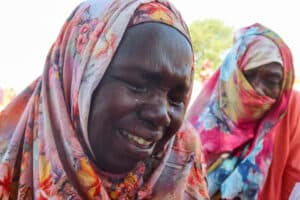
Demand for these health services has more than doubled since April 2023, from 3.1 million to 6.7 million, but only a fraction of them receive the necessary care. The situation is equally dire in neighbouring countries, where refugee women also face violence and exploitation, and where resources to help them are limited.
Future prospects
During our political café, we also talked about the future prospects for Sudan. The war has destroyed the country's infrastructure, displaced millions of people and caused a huge humanitarian crisis. International efforts are needed to end the violence, provide humanitarian aid to the millions affected and restore press freedom so that the truth can be told.
It is crucial that the international community wake up to the suffering of the Sudanese people and become actively involved in finding a lasting solution to this complex conflict.

